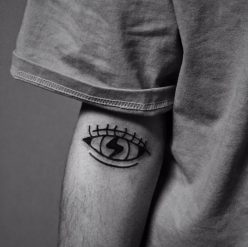Browsing the posts from the accounts I follow on social media is one of my favorite things to do in my fragmented time, and Weibo, whose design and function is in equivalent with Twitter, is one of the social media platforms that I visit more often. Most of the accounts I followed are friends, vloggers, arts bloggers and celebrities. In the meantime, I can find more posts under the recommendation section due to the recommended algorithms of Weibo, which explore more interesting content of my interest and enrich the user experience.
Started from few years ago, there are advertisings appear among those post and most of the content of these are related to plastic surgery, wedding customization, and fashion retailer E-commerce. At first, I though these were randomly push to me, thus I click “not interested”. However, similar advertising is still included on my Weibo till now. Looking at the advertisings show on my male friend’s Weibo, I found out that not only the contents are totally different which are about cars and games, but also the frequency for the advertising is lower than that of mine – there are 1 piece of advertising among 6 to 7 posts for him whereas there are 2-3 ad post for me.


Through all these automatically appear content, it reflects the identities the algorithm placed on the female Weibo users except for their interest. It reveals that the algorithm is encoded with the Chinese traditional ideologies about women and the gender bias carried by its designers. Reflecting by the advertising for female users, we also can see the value system it carried believes that women needs to know how to dress and to be pretty to please men and considers marriage as a life guarantee. At the same time, it is not difficult to see the commercial interest of Weibo as an enterprise whose goal is to maximize its profit from the difference between the advertising frequency for male and female users. It considers that it is easier to influence women’s purchase intention so it tends to impact them with conveying consumerism.
There is another case on Weibo shows the gender bias of Weibo’s algorithm. As Chauncey reported in 2018, a Chinese tycoon started a lucky draw run by Weibo raffle algorithm to give out 10,000 RMB each to 133 people to celebrity the championship of his E-sport team. However, the result turned out that there is only one male winner among all 133 winners. It is doubts that Weibo tries to attracts more female users who tends to spend more money which it can generate larger profit from. It is not acceptable for users to receive contents with gender bias lens since Weibo is a social media platform has millions of active users. It is not doubt that what people read impacts on their value systems and behavior unconsciously.
With the algorithm carried gender bias, Weibo not only becomes annoying because of the worse user experience, but also it could aggravate the problems caused by gender inequality. Benjamin stated that:
“Difference has a commercial value: shift toward multiculturalism marked by ‘a move away from one-size-fits-all mass marketing toward ethnically tailored niches that capitalize on calls for diversity”.
Since advertising seems to be unavoidable on social media platform, it is more reasonable to generate them to match the interest and needs for the users which lowers the possibility of users’ ad-avoidance.
